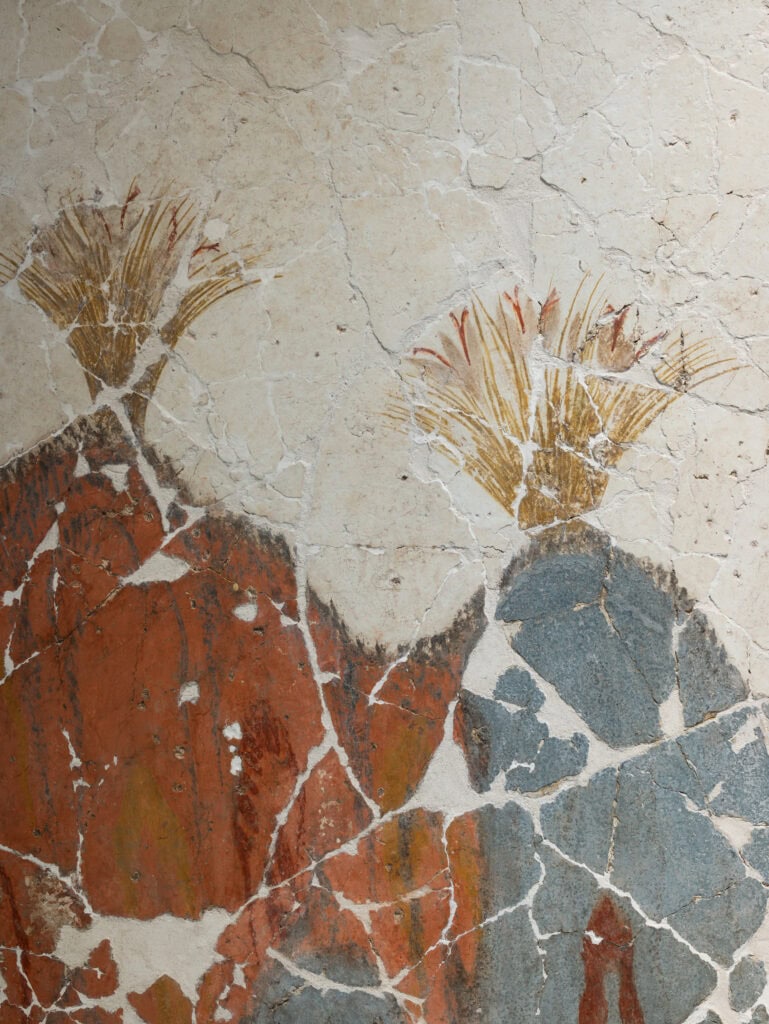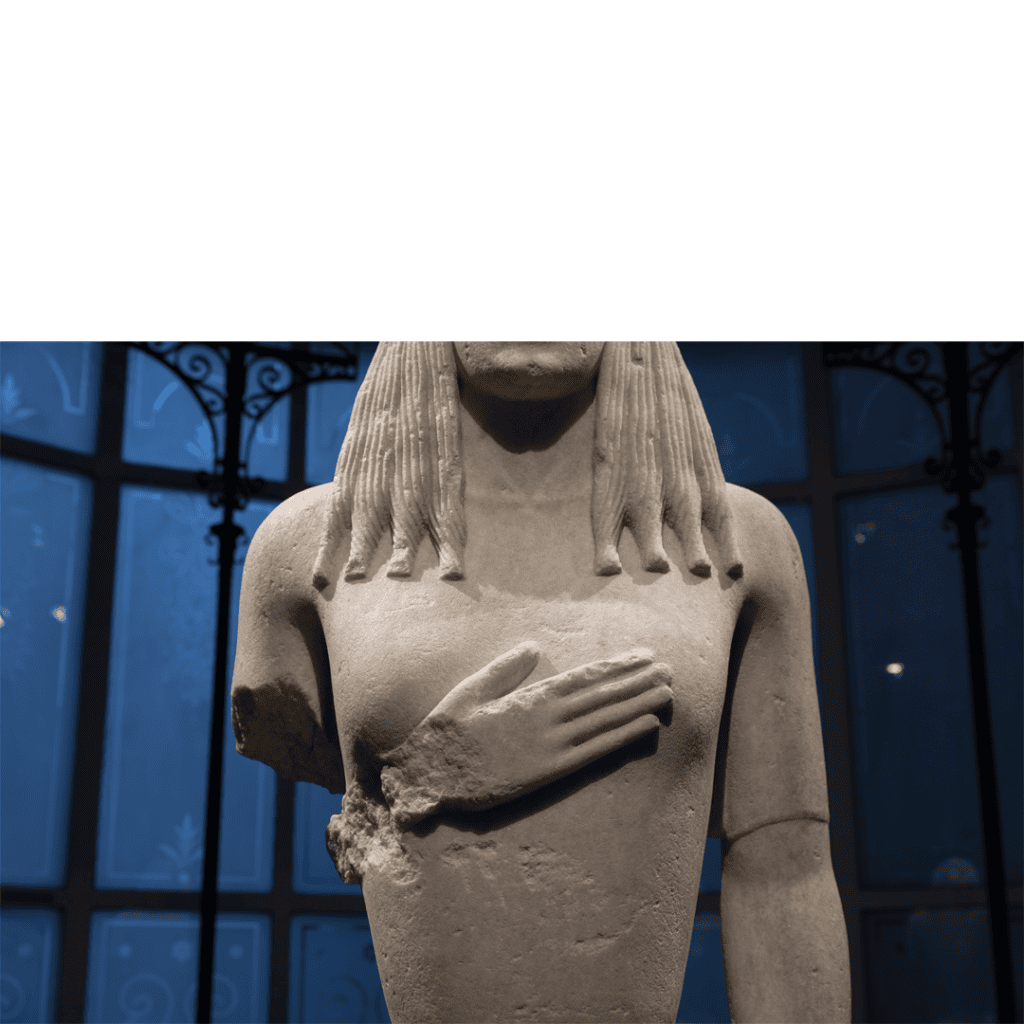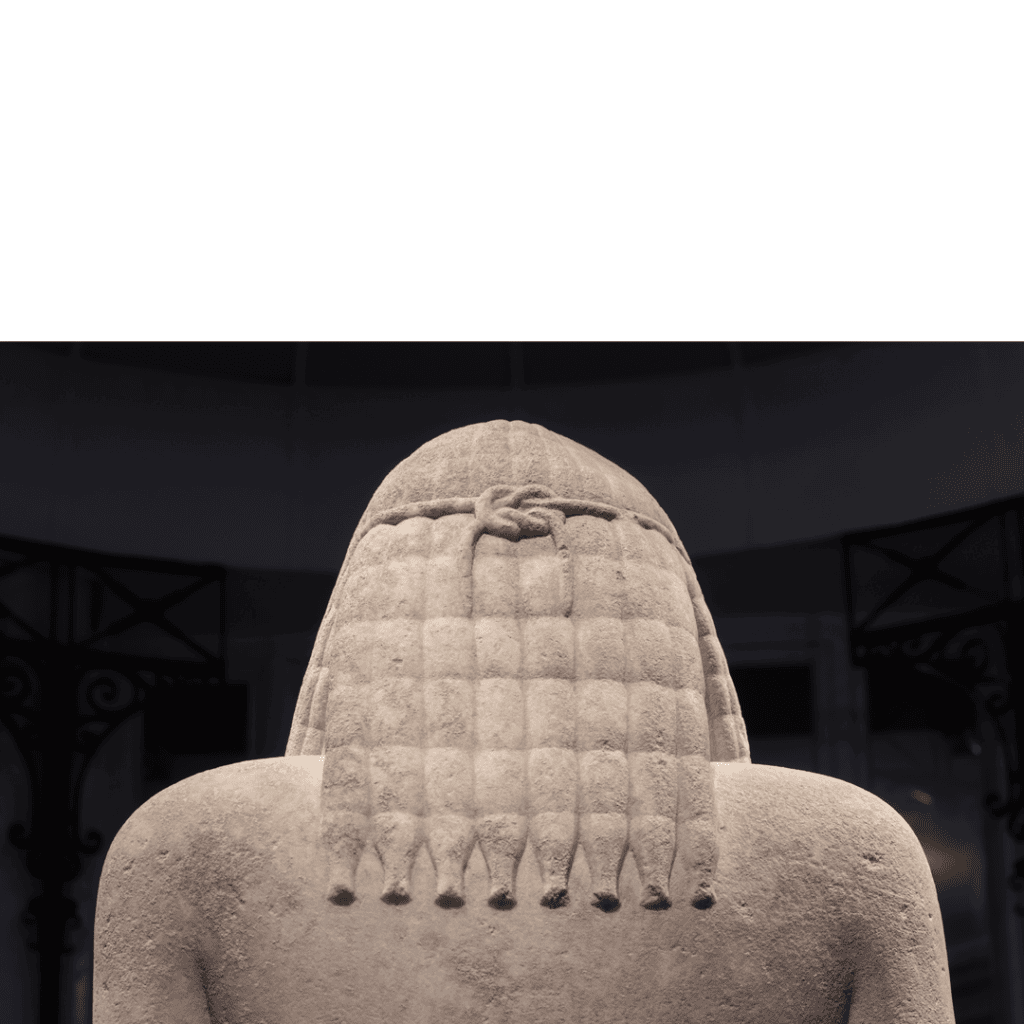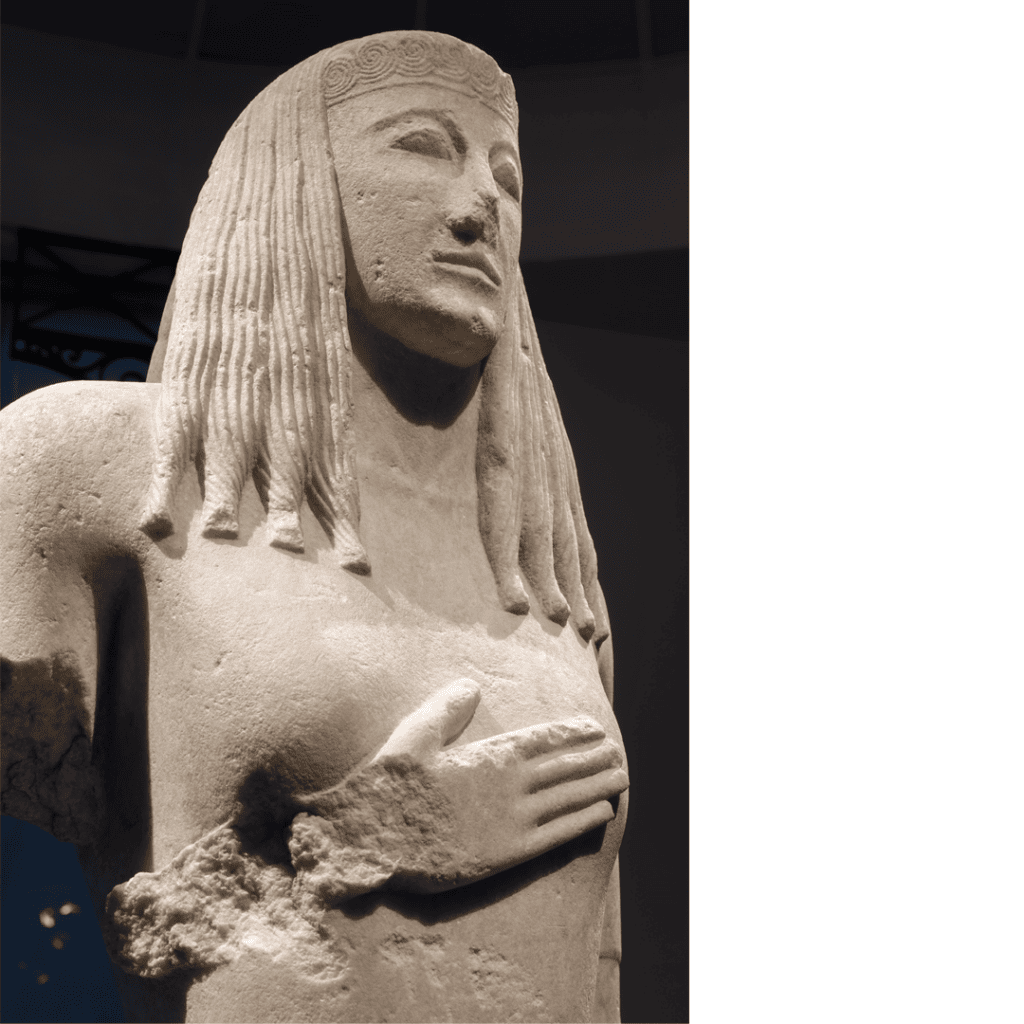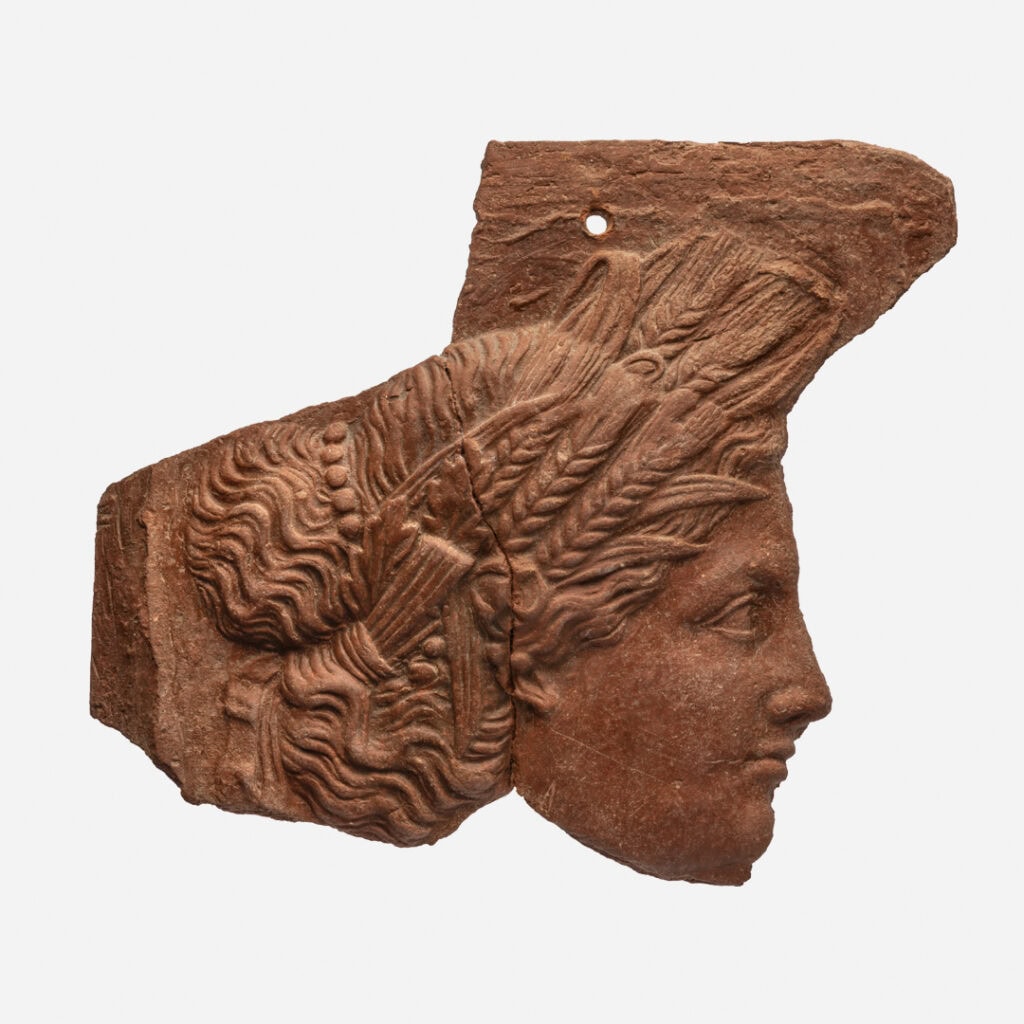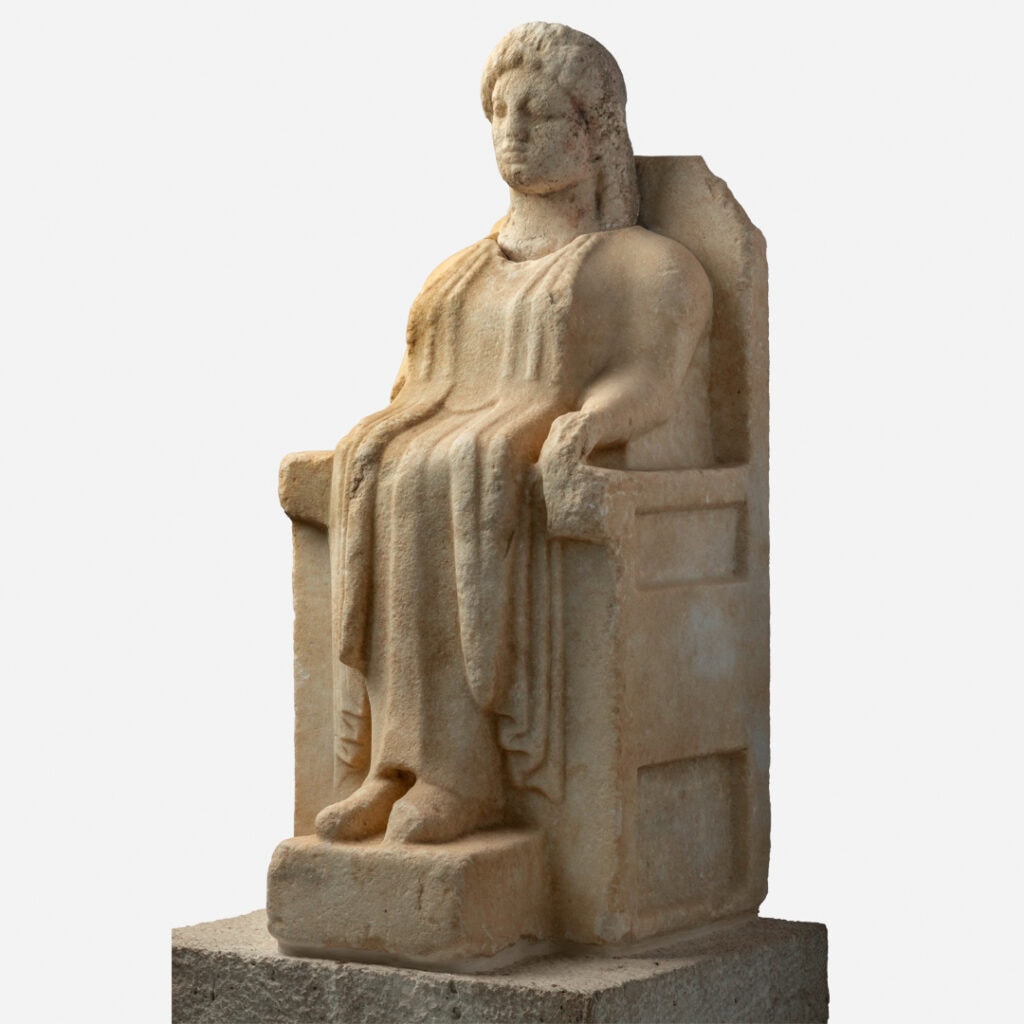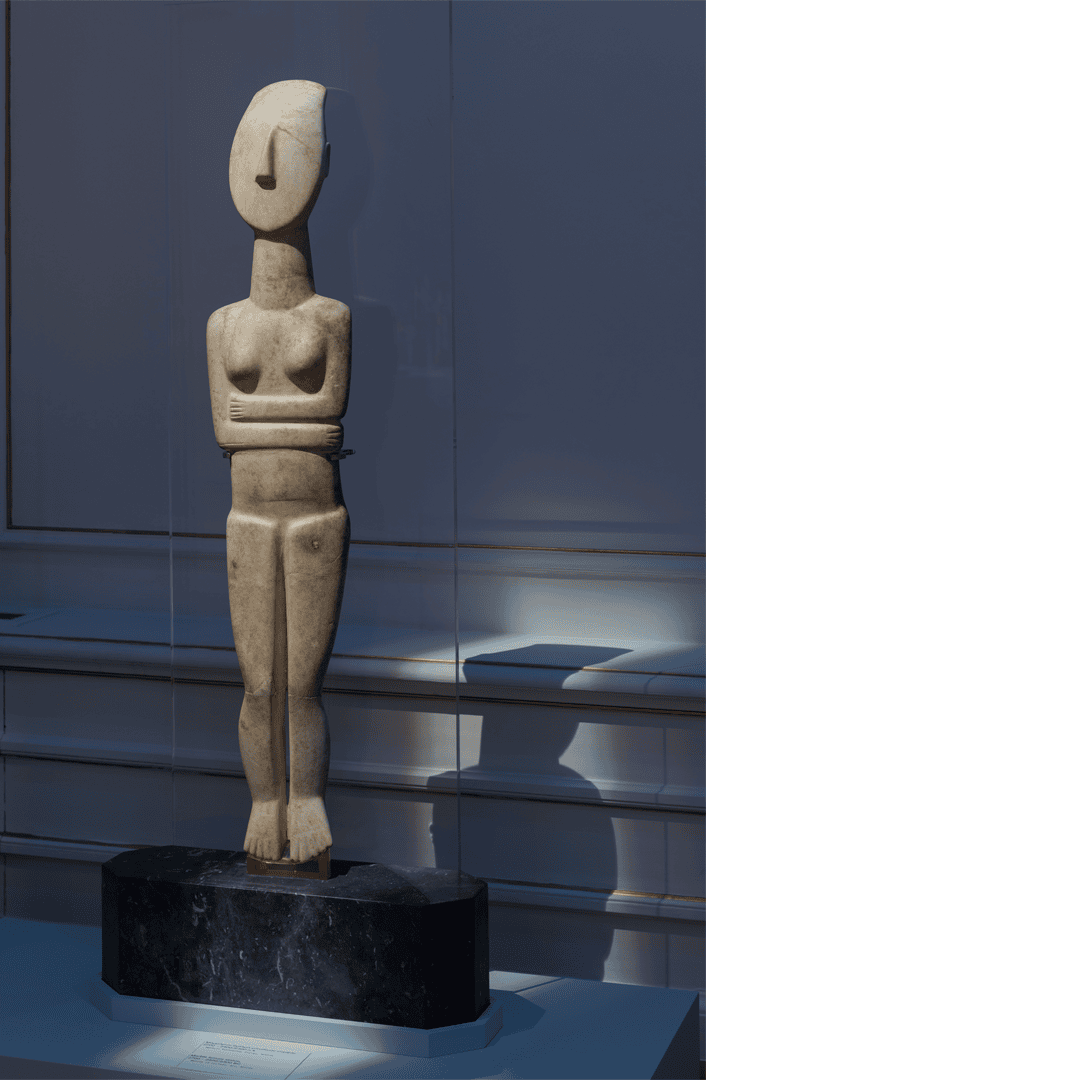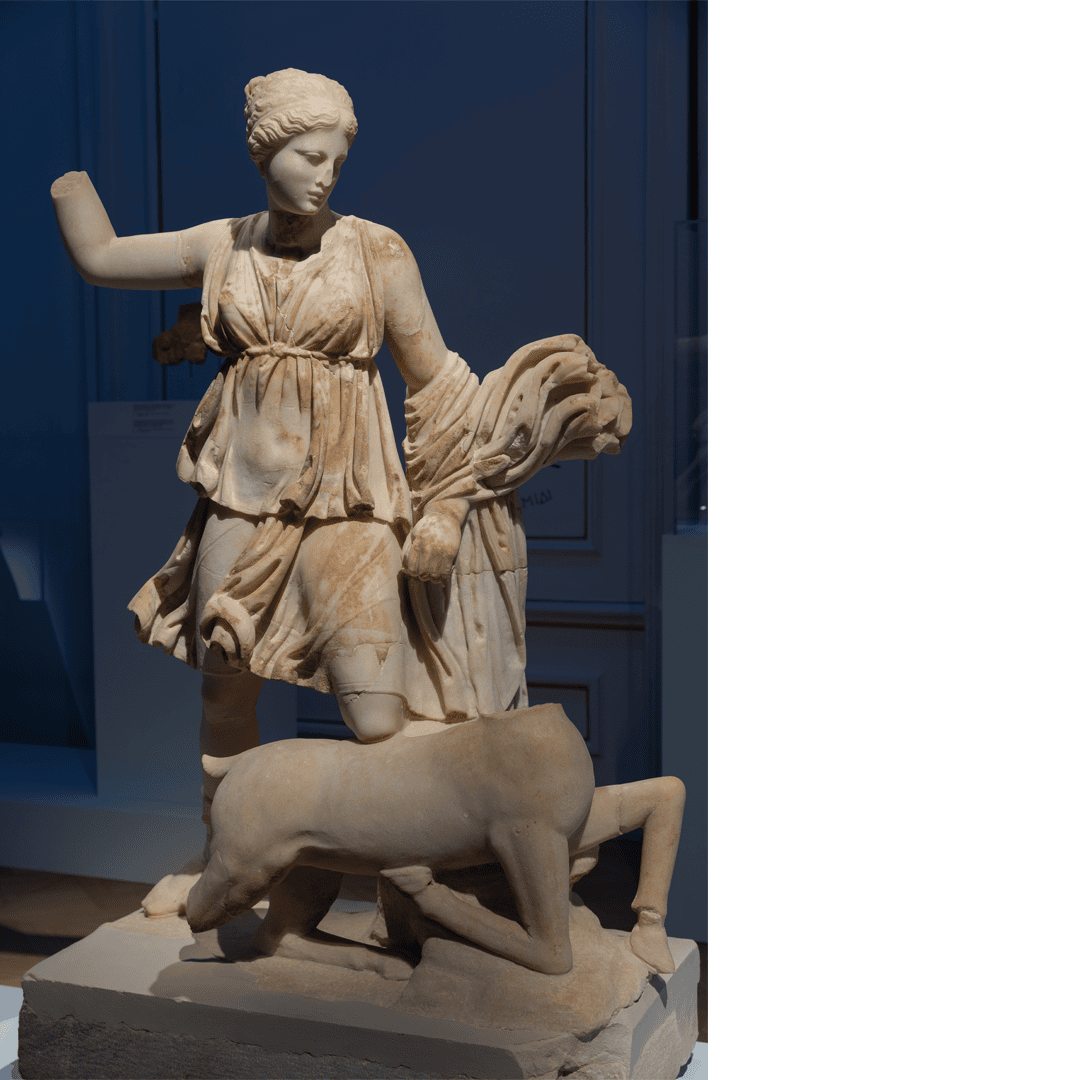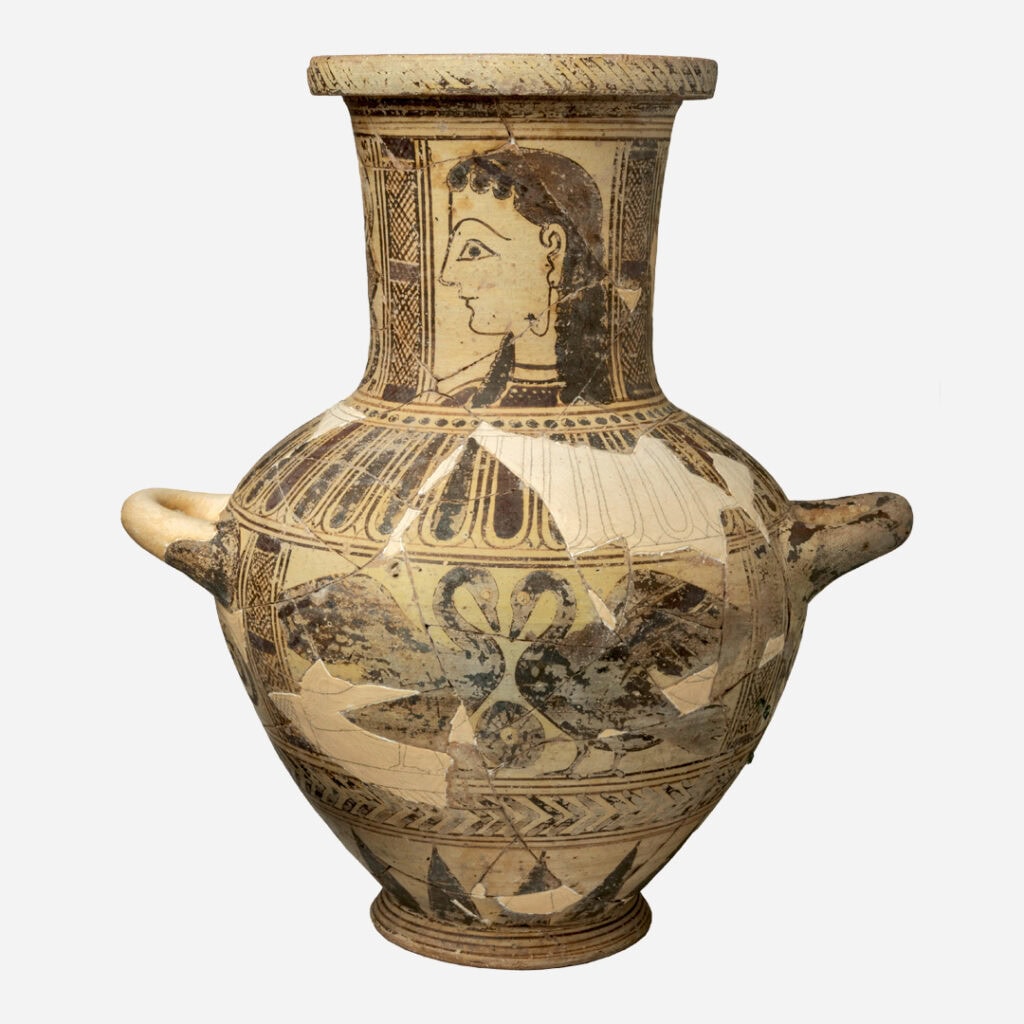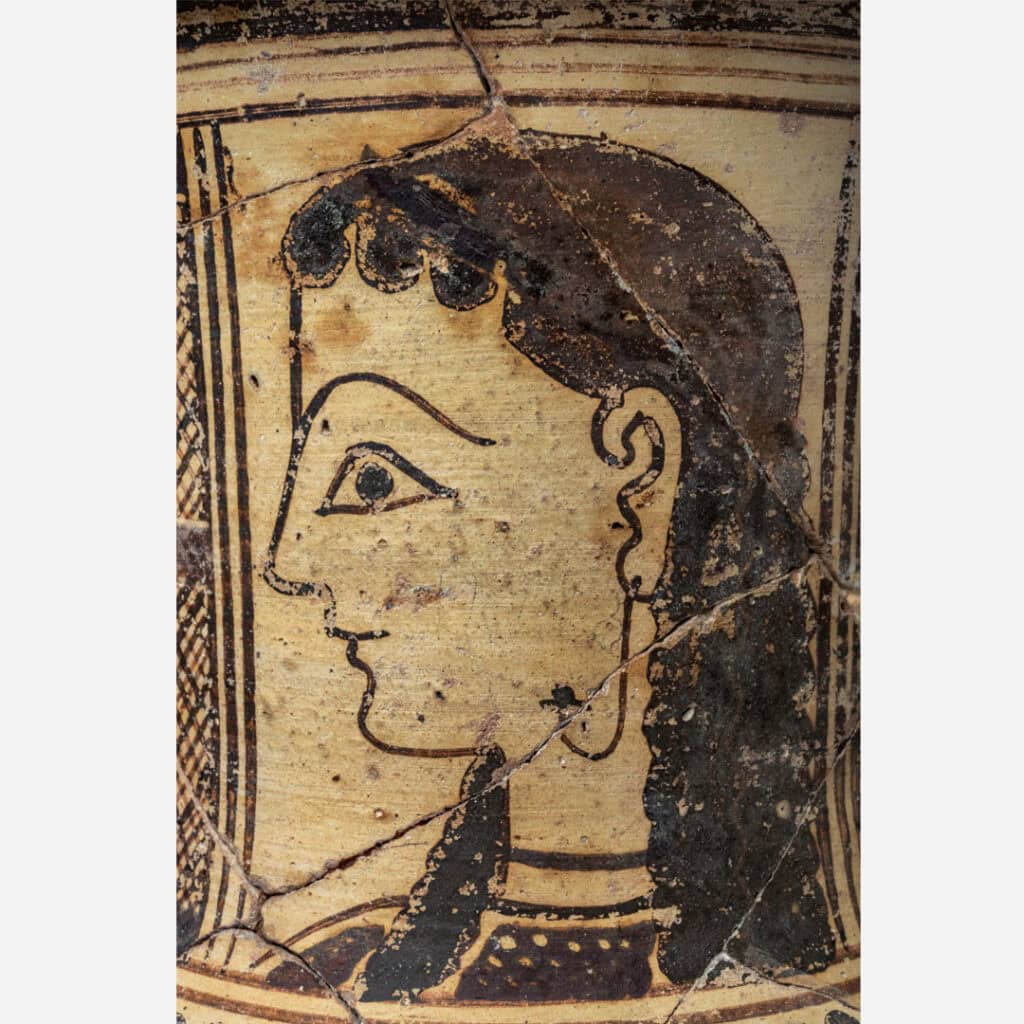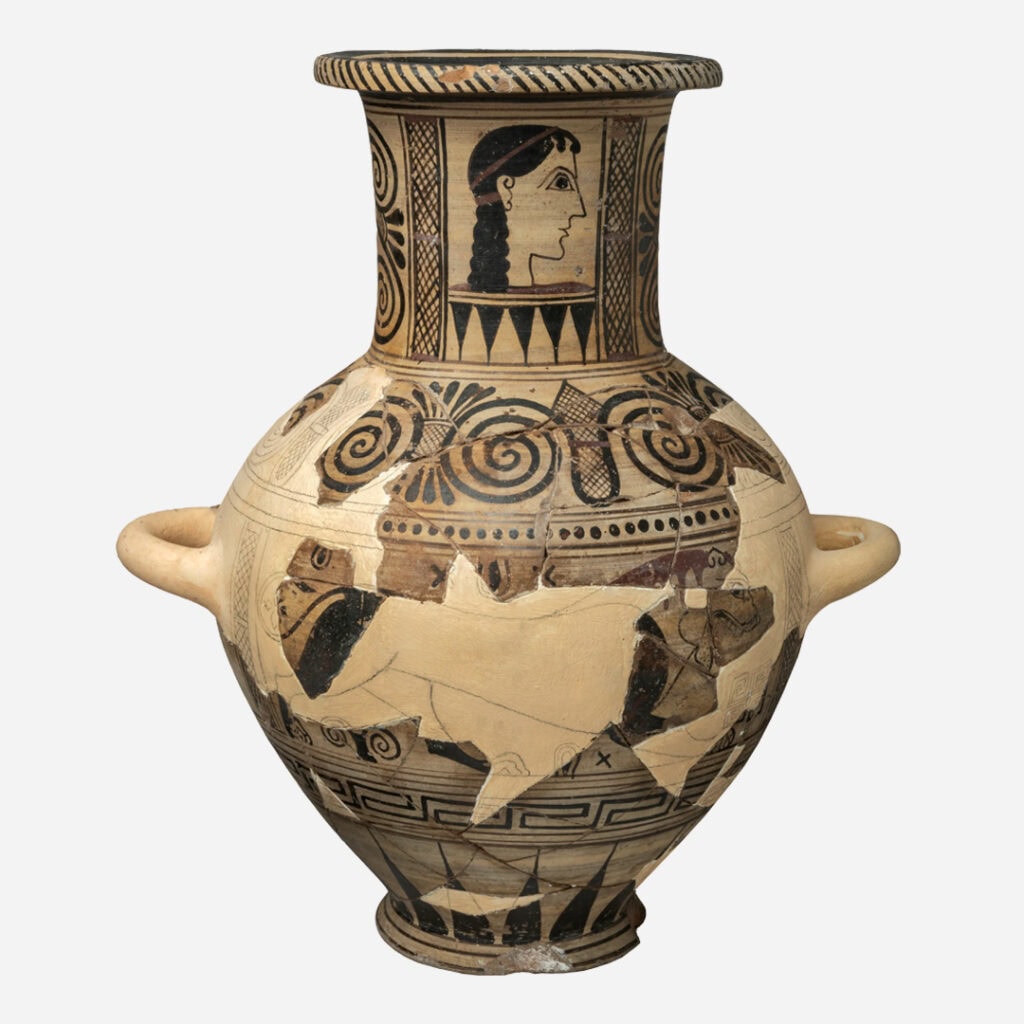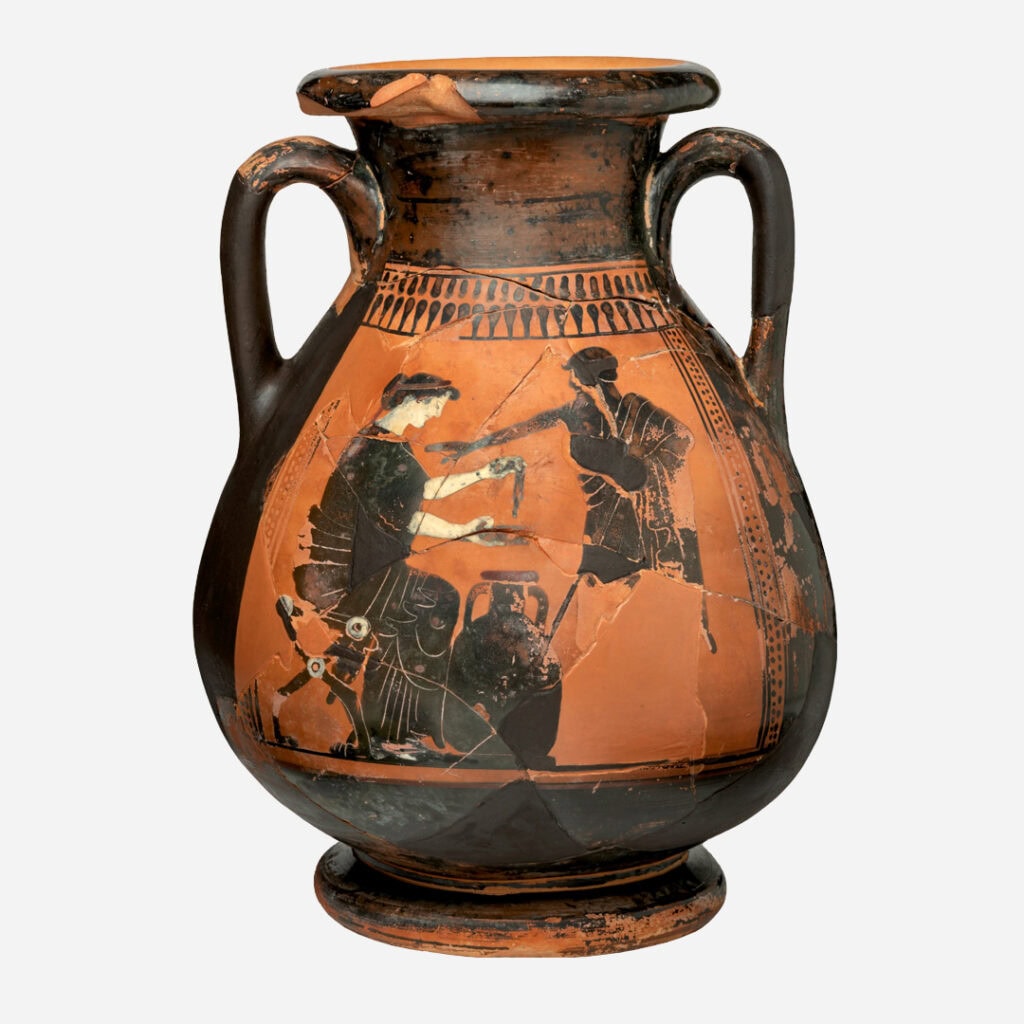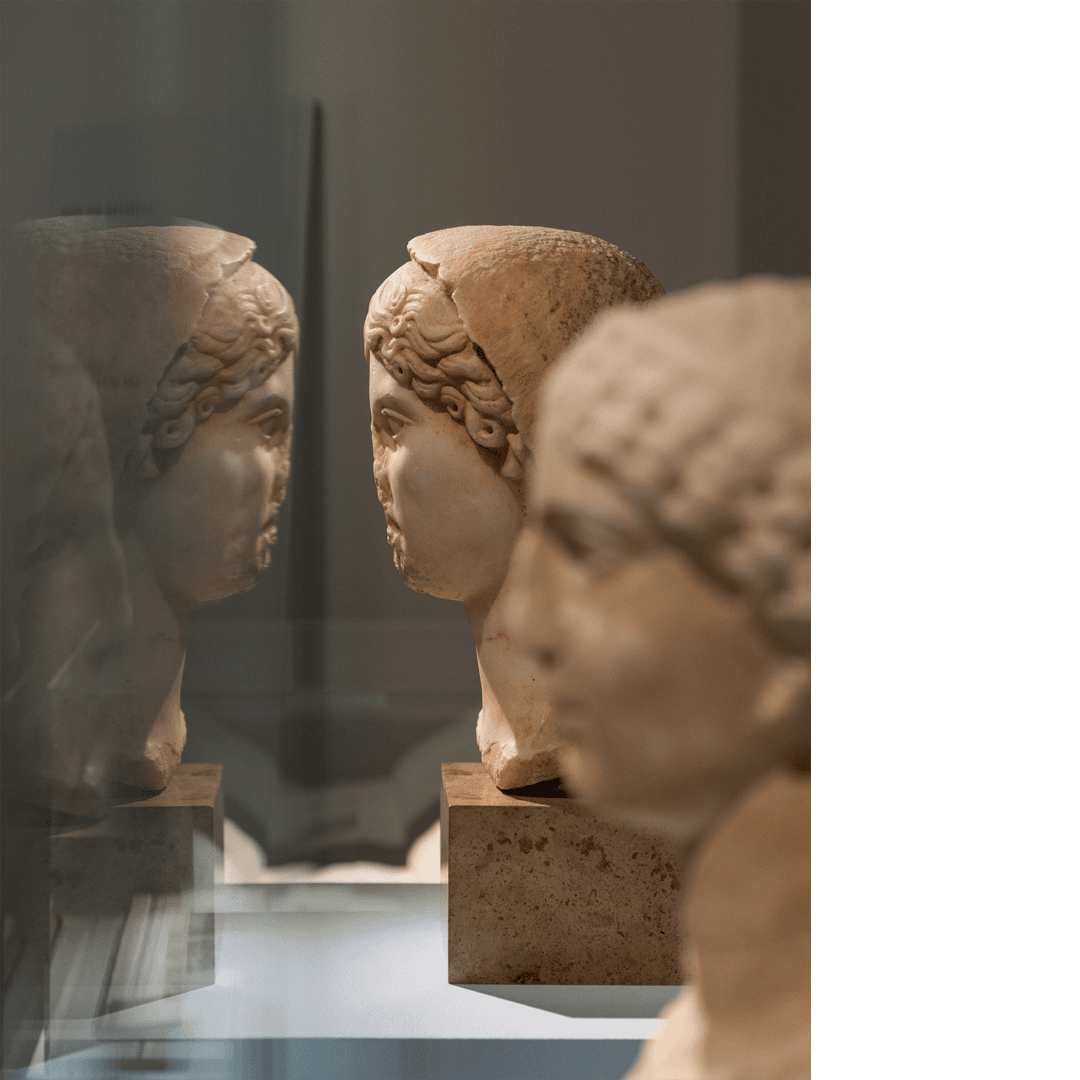Kykladitisses:
Untold stories of women in the Cyclades
ARCHAEOLOGICAL EXHIBITION
FROM DECEMBER 12, 2024 UNTIL MAY 4, 2025

This compelling exhibition explores the diverse roles and evolving status of women in the Cycladic islands, spanning from prehistoric times through to the 19th century.
What were these roles and circumstances?
Women in the Cyclades were venerated as goddesses of nature and motherhood, served as priestesses, saints, healers, and worshippers. They were protectors of the sea and sailors, empresses, mothers, immigrants, and participants in the Greek Revolution.
Through these varied identities, Cycladic women emerged as central figures in both private and public life—shaping social, political, religious, and family spheres.
IN THE SANCTUARIES
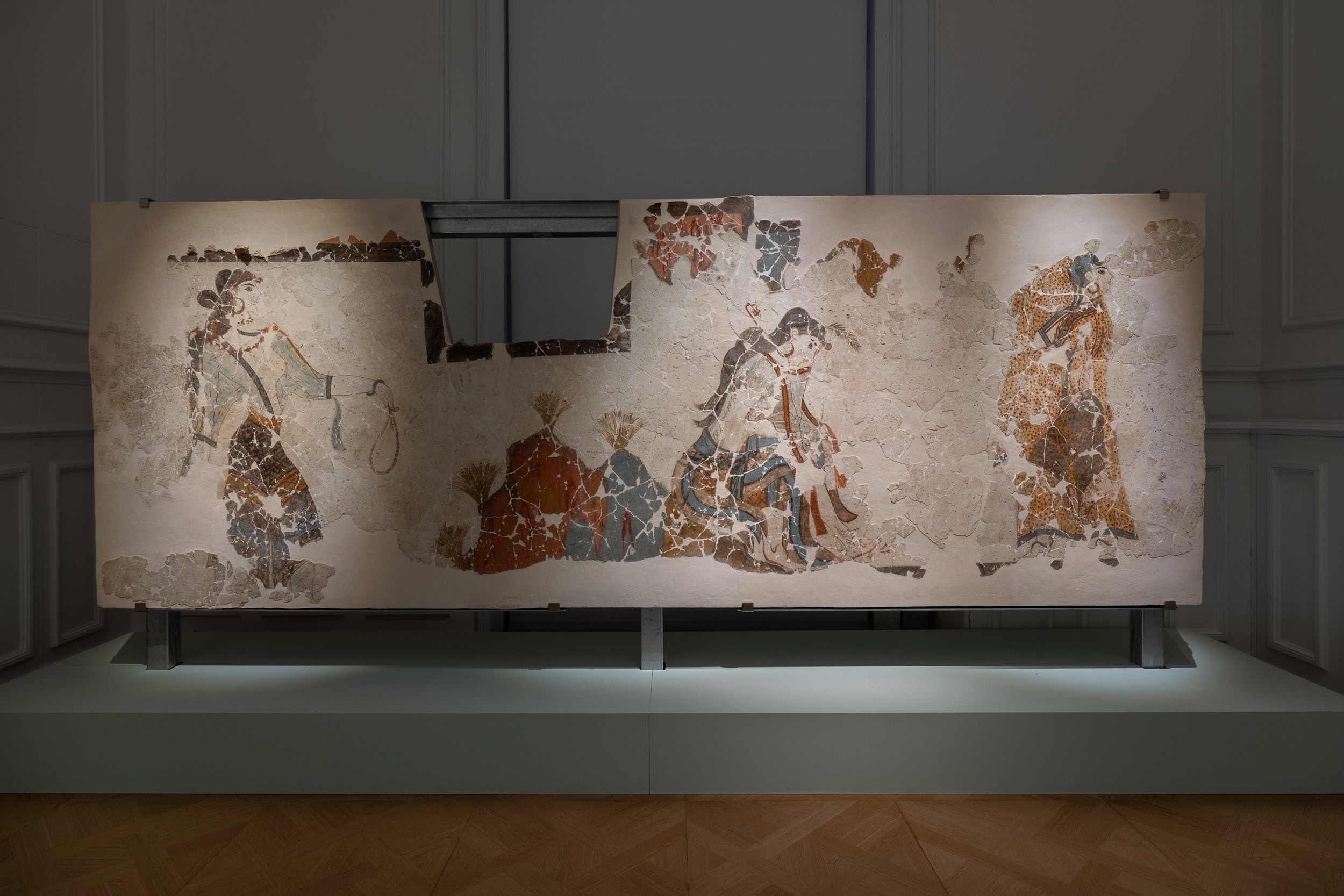
This remarkable mural, originating from a public building used for ritual ceremonies, illustrates rites of initiation—rites that marked the transition from childhood to adulthood for boys and girls alike.
The fresco depicts three women: one wearing a necklace, a seated woman treating a wound on her leg with saffron, and a young girl with a shaved head, known as the Peplophoros (Veil Bearer). These figures are engaged in an initiation ritual, culminating in a purification ceremony centered around the young Peplophoros, symbolizing her passage into adult life.
Observe the three women…
Their garments and the vivid colors bear resemblance to Minoan frescoes from the palaces of Crete.
Did you know that…
The adyton was an innermost, sacred chamber within a sanctuary, accessible only to select individuals?
Saffron, also known as crocus, is a plant famed for its medicinal properties?
Purification tanks served as symbolic sites for cleansing and may have been used in rites of passage from one life stage to another?
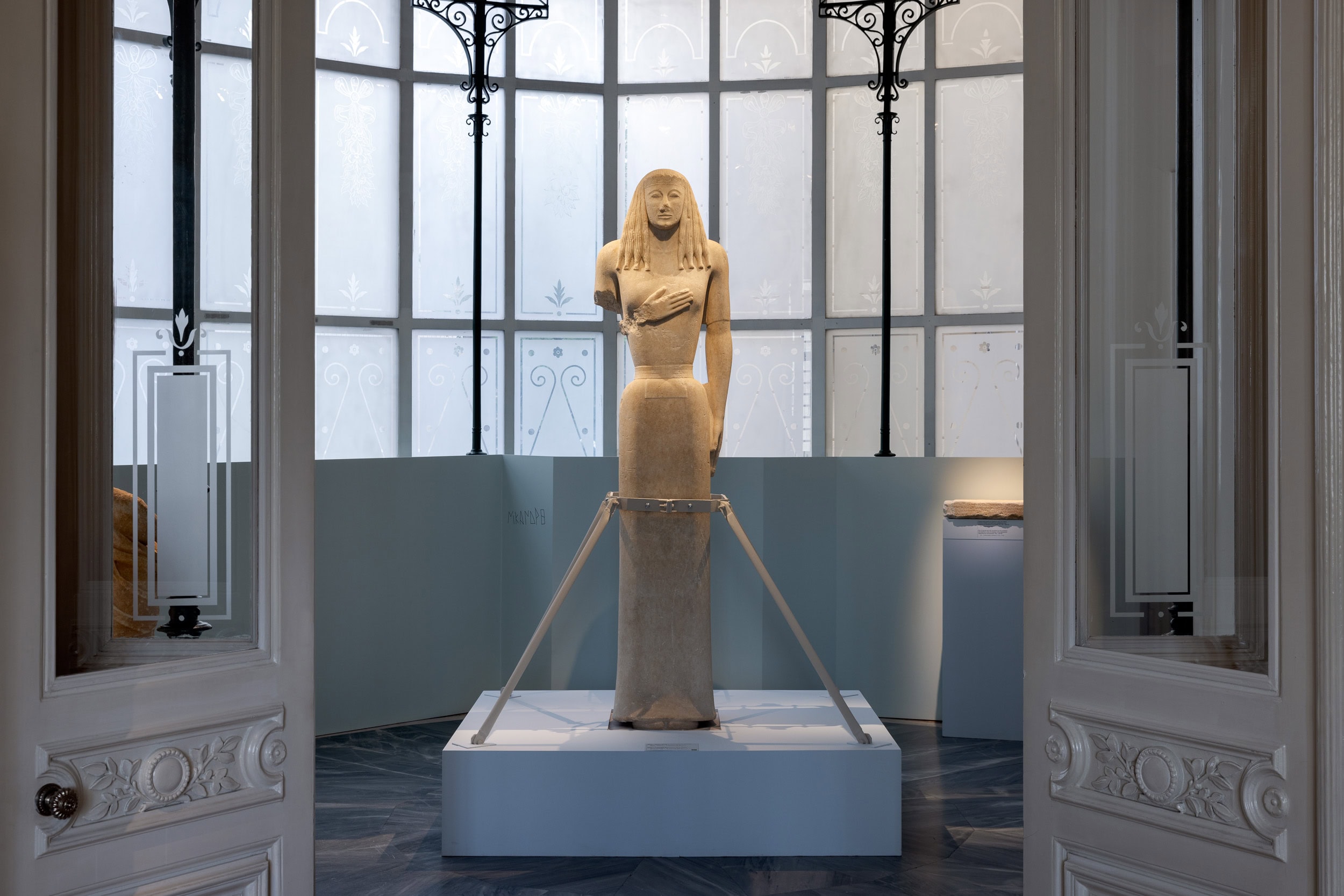
This monumental sculpture from the Archaic period stands at an awe-inspiring 2.48 meters in height.
Crafted from Naxian marble, it was offered as a votive object at a sanctuary in Thera, in honor of a goddess.
Did you know that…
Oversized sculptures were symbols of power and social hierarchy?
They were often used in sanctuaries to honor deities or as funerary monuments to commemorate the deceased?
GODDESSES OF THE ISLANDS
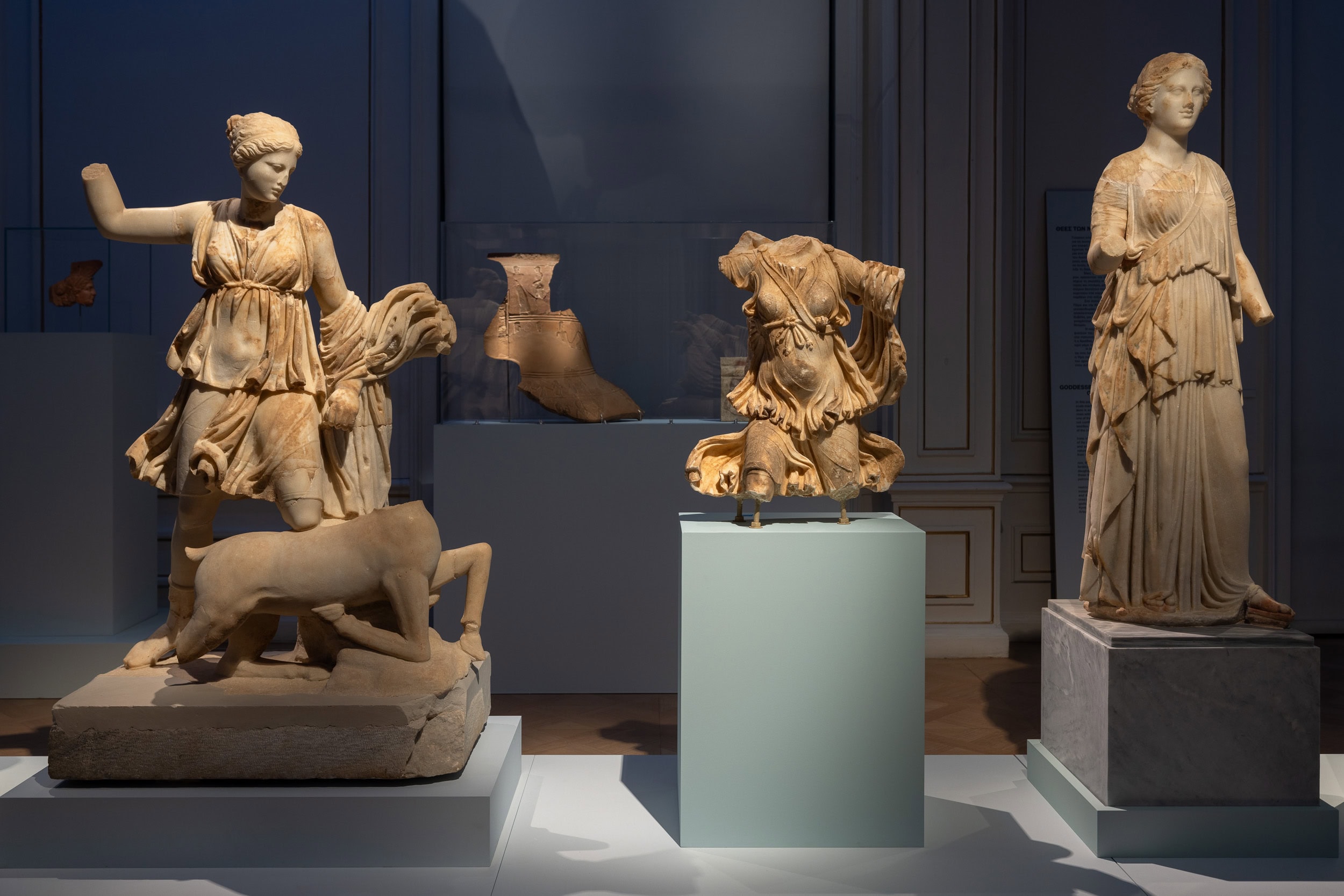
In the Cyclades, many female deities were worshipped as guardians of nature, fertility, motherhood, the home and the cities. Among these goddesses were Artemis, Aphrodite, Demeter, and Hera, along with others of foreign origin such as Cybele, Isis, and Ariadne from Asia Minor, Egypt, and Crete.
Did you know?…
During the prehistoric Cycladic Civilization, marble figurines of women with folded arms likely represented the Great Mother Goddess—a divine figure associated with nature and fertility?
Artemis and her twin brother Apollo were born on the sacred island of Delos. Their parents were Zeus and Leto.
Artemis, goddess of the hunt and wilderness, was the divine protector of young girls, women, and childbirth.
Her sacred animal was the deer.
Did you know that…
Artemis was the only deity who could protect and, paradoxically, kill wild animals?
FEMALE IDENTITIES
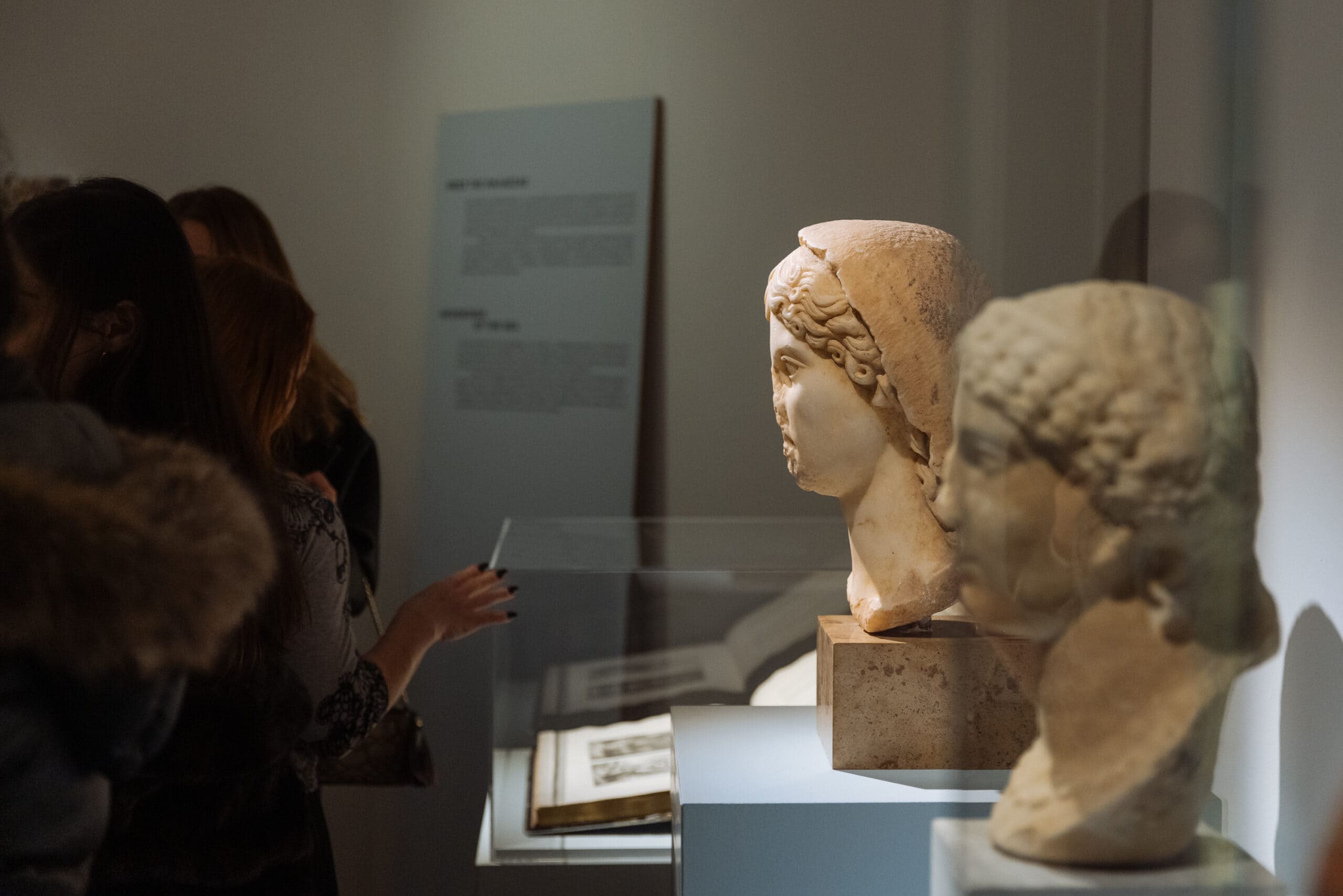
Cycladic women held a pivotal role in the home. They took charge of both raising the children and handling all household tasks. Leaving the house was generally reserved for religious ceremonies or social gatherings.
For centuries, a woman’s marriage was arranged by her father, who provided a dowry to the groom. This tradition underscored the perception of women as property—first belonging to their fathers and later to their husbands.
While this system was meant to ensure protection and care, it also reinforced a woman’s limited autonomy.
Did you know that…
Dowries—property transferred from the bride’s family to the groom—were formalized in ancient times as legal contracts? This tradition persisted for many centuries.
There were, however, exceptions:
Some women were emancipated—independent individuals who had to work outside the home. Others held positions of lineage or inheritance, which granted them power and status equal to that of men.
There were educated women and others with financial means who supported their communities or contributed to their nation.
Look for…
Discover more Cycladic women and their untold stories throughout the Museum’s exhibition!
Ariadne: daughter of King Minos: Taken from Crete by Theseus, she was later abandoned on Naxos, where the god Dionysus found and married her.
She ascended to goddesshood.
Amymone-Beroe: daughter of Aphrodite and Adonis. While resisting Poseidon, he seized her by pulling at her garment.
Agrippina the Elder: Roman empress and granddaughter of Emperor Augustus, her influence extended to the Cycladic region.
Isis: Egyptian goddess: Her worship reached the Cyclades, where she became known under names such as Efplia, Pelagia, and Sotira—all related to the sea and the protection of sailors.
Magia Pulchra: a Roman woman who embraced Cycladic identity and funded the construction of key public buildings in Milos.
Manto Mavrogenous: a heroic and resolute woman who significantly contributed to the Greek Revolution by donating her fortune.
Evanthia Kairi, from Andros: The sister of Theophilos Kairis, she was a dynamic, educated woman who translated foreign literature into Greek to educate young women of all social backgrounds.


